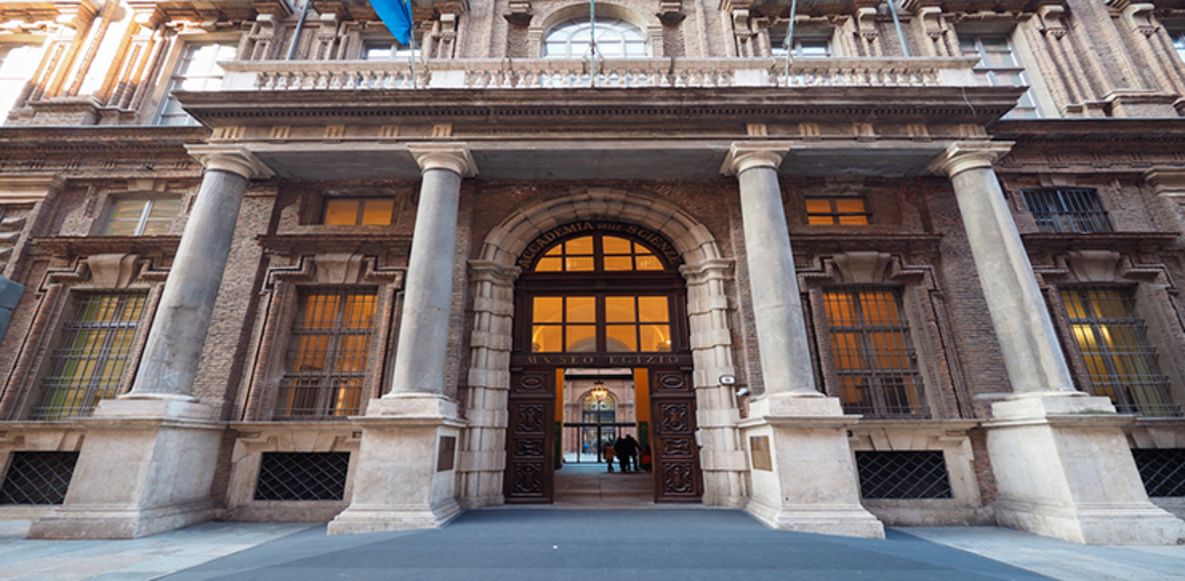Egyptian Museum of Turin: a journey over 2,000 years long
An itinerary through 4,000 years of history, art, and archaeology: the Egyptian Museum of Turin, a stone's throw from Piazza San Carlo and Royal Palace, is the oldest in the world, entirely dedicated to Nilotic civilization and second only to that of Cairo. With its four floors, it extends for over 2 km and maintains a constant temperature between 21 and 24 degrees. The collection houses objects of daily life and funerary artifacts of extraordinary historical value: the longest existing papyrus, of Iuefankh, measuring 1,847cm, 24 visible human mummies, 17 exhibited animal mummies, and over 40,000 pieces covering the period from the Paleolithic to the Coptic era. Among the large statues preserved in the museum complex, the one dedicated to Sethi II weighs 5 tons. And furthermore, thematic visits, in-depth tours, cultural events, contemporary exhibitions, and conferences, such as those frequently held on the pharaoh of the moment. An unmissable tour for those who visit Turin.
The four floors of the Egyptian Museum of Turin
To the four ordinary floors of the Museum, founded in 1824 starting from the collection of art collector Bernardo Drovetti, a basement floor dedicated to natural sciences dating back to 1871 has been added. On the ground floor, the Gallery of Kings, the Temple of Ellesiya, and the Nubian Hall are prominent. The first floor houses artifacts such as the Tomb of Kha, the Gallery of Sarcophagi, the area dedicated to restoration, and objects from the Late, Ptolemaic, Roman, and Late Antique periods. On the second floor are exhibited findings from the Predynastic period, the Middle Kingdom, the New Kingdom, and the Tomb of the Unknown, of Iti and Neferu. The third floor is dedicated instead to temporary exhibitions.
The papyrus collection of the Egyptian Museum of Turin
The museum houses one of the most significant papyrus collections in the world, with approximately 700 manuscripts, whole or reassembled, and over 17,000 papyrus fragments documenting over 3,000 years of written material culture in seven scripts and eight languages. The King's Papyrus, or List of Kings, is the only true list, besides Manetho's manuscript, that includes the names of Egyptian rulers, otherwise unknown. The Erotic-Satirical Papyrus, which is not pornographic in nature, is rather a humorous document depicting animal caricatures and sexually explicit subjects in an ironic key: a document quite close to modern mentality.
The Book of the Dead of Iuefankh, on the other hand, is a papyrus almost 19 meters long, completely preserved. The title was chosen by the German Egyptologist Richard Lepsius. From right to left, it contains, in 165 chapters, a collection of formulas for the guidance, protection, and resurrection of the deceased in the afterlife. It thus describes the indispensable procedures to accompany the corpse after death: correct embalming, the procession to the tomb, the preservation and sustenance of the body. It then recounts the capacity for transformation, justification, protection of the deceased, and the possession of knowledge. These are the themes written in cursive hieroglyphics for Iuefankh, son of Tasheretemenu.
The virtual tour of the Egyptian Museum of Turin
In addition to moving among the showcases, the Egyptian Museum offers users the possibility to amplify the live experience through a series of digital tools available to the public. Through 360-degree high-definition panoramic photos, you can virtually visit the most important halls of the Turin collection, those of Maia's chapel, those dedicated to the village of Deir el-Medina, and the tomb of Kha. Thanks to a series of 3D models, it will also be possible to observe the artifacts with unprecedented precision. The virtual tour includes 18 in-depth videos, allows viewing historical photographs, and accessing additional content from the Museum's own database.
Points of interest around the Egyptian Museum of Turin
The Mole Antonelliana, true icon of the city with its 187 meters of height, is only ten minutes from the museum: just take Via Principe Amedeo on foot and then Via S. Massimo to admire all the imposing structure. Porta Palatina, an important monument of Turin is north of the museum and can be reached, also on foot, in just over ten minutes. The particularity of the Egyptian Museum is that it is located in the city center, so a visit to Piazza San Carlo is absolutely worthwhile, both for its proximity and for the Savoyard beauty of its volumes, moreover enriched by the equestrian statue of Emmanuel Philibert of Savoy in the center of the square. And speaking of squares, in the Quadrilatero area, you can find Piazza Statuto, one of the last of the Risorgimento history of Italy's Savoyard capital. If you are truly passionate about museums, then a walk in the Royal Museums is also a must, immersed in the fantastic royal gardens of the city.
Among the museums of Turin, the Egyptian one is probably the most fascinating for the emotional impact it can convey to the visitor. Purchase your entrance ticket, consult the guide on the official website of the museum complex and come to visit it at any time of the year. It is located at the Palazzo dell'Accademia delle Scienze, a stone's throw from Piazza San Carlo. Arrive in the city and choose our B&B Hotel Torino President, for a perfect stay in the city center in total comfort, at the best value for money. We await you.



















